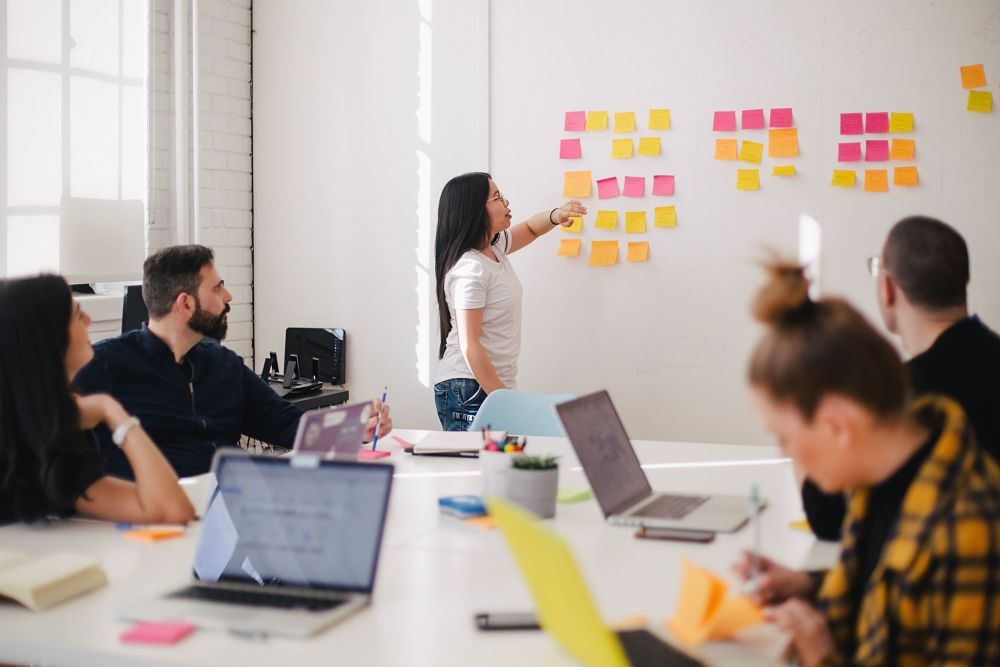The flipped classroom model has been seriously gaining in traction in recent years. Universities and colleges across the world have been experimenting with this teaching practice. The report “Using Technology to Support At-Risk Students’ Learning” (2014) carried out by the Alliance for Excellent Education and the Stanford Center for Opportunity Policy in Education (SCOPE) concluded that technology used effectively increases the participation of students and can lead to significant improvements in student achievement.
How flipped classroom works? This blended learning method is designed to help educators make better use of the classroom time available to them. Instead of using valuable face-to-face time to give lectures or exchange information, in the flipped classroom model educators do things the other way round. Students are given access to e-learning resources to view at home, then use class time to engage in discussion and complete activities. More and more educational organizations are coming round to blended learning models simply because they believe this really is the best method to support students’ learning.

Reasons Why the Flipped Classroom Model Really Works
But does this hybrid learning method really work? Here are four reasons why it’s well worth exploring.
#1. Students can revisit information whenever they choose with the flipped classroom
In traditional teaching strategies, students have to rely largely on their own notes or recollections when it comes to revisiting learning material. This can make it difficult for them to study in their own time, especially if they didn’t properly understand a crucial concept when it was covered in class. When students are given e-learning resources to use independently, they have far greater control over how and how quickly they learn. When students have more access to learning tools, they are able to have greater control of the entire subject and the objectives to be met. They are able to re-examine material that is most difficult for them, review all material, and catch up on classes that they may have missed.
#2. Class time can be used to engage in valuable discussions with the flipped classroom model
It seems illogical that most class time is spent listening to lectures and not engaging in discussion. In flipped classrooms, that class time is freed up for educators to lead debate on the subject they are learning about. Educators can use this as an effective method to ensure students have gained a true understanding and to suggest areas for further study. With this method, classroom time is used to encourage debate around what was learned at home, carry out reinforcement exercises and work on points that need clarification or further explanation.
#3. Educators have more opportunity to offer feedback with the flipped classroom
When class time is used for hands-on learning, educators have more opportunities to give students feedback on their progress. Misapprehensions can be addressed quickly and efficiently when students are working on activities in class, which isn’t the case when these activities are done independently at home.
The e-learning part in the flipped classroom method has many advantages, but one of the main benefits is that it can make assessments much easier. This is good for students as it makes it much easier for them to get a good understanding of how well they are doing. It is also a great tool for teachers and educators, as they save management time compared to traditional exams or tests. The LMS (learning management system) platforms allow an automatic and instantaneous evaluation, which also offers all kinds of data and statistics of great value for teachers.
Likewise, there may be students who are intimidated by asking questions in class, which can prevent them from making as much progress as they could. Being able to send your doubts through a digital platform can be of great help. Tutors can create a virtual tutoring schedule, schedule chat sessions to solve doubts, or encourage students to send their questions privately as soon as they arise.
#4. Lessons can be more personalised with the flipped classroom model
Each student learns in a slightly different way at a slightly different pace. The more flexibility educators have during the class time they have available, the more opportunity they have to personalise content for different levels and abilities. This is one of the reasons many educational establishments are beginning to use the flipped classroom for learning languages. If students have covered the basic learning material independently in advance, educators are able to utilise face-to-face time to offer practical language tuition, assess pronunciation skills and suggest key areas for improvement.
Furthermore, it is easier for students when they see the subject as a whole, because apart from giving them perspective, they have greater control of time management for their organization and thus reach their goal. Generally speaking, the more control over your own learning, the more likely you are to remain active in the course and complete it successfully.
The signs certainly suggest that blended learning is the way forward for education. In fact, 96% of teachers who have experimented with flipped learning say they would recommend it to their colleagues.
Interested in learning more about how flipped classroom works? Take a look at our article on interactive multimedia and why it’s so effective in education.
You may also like:

